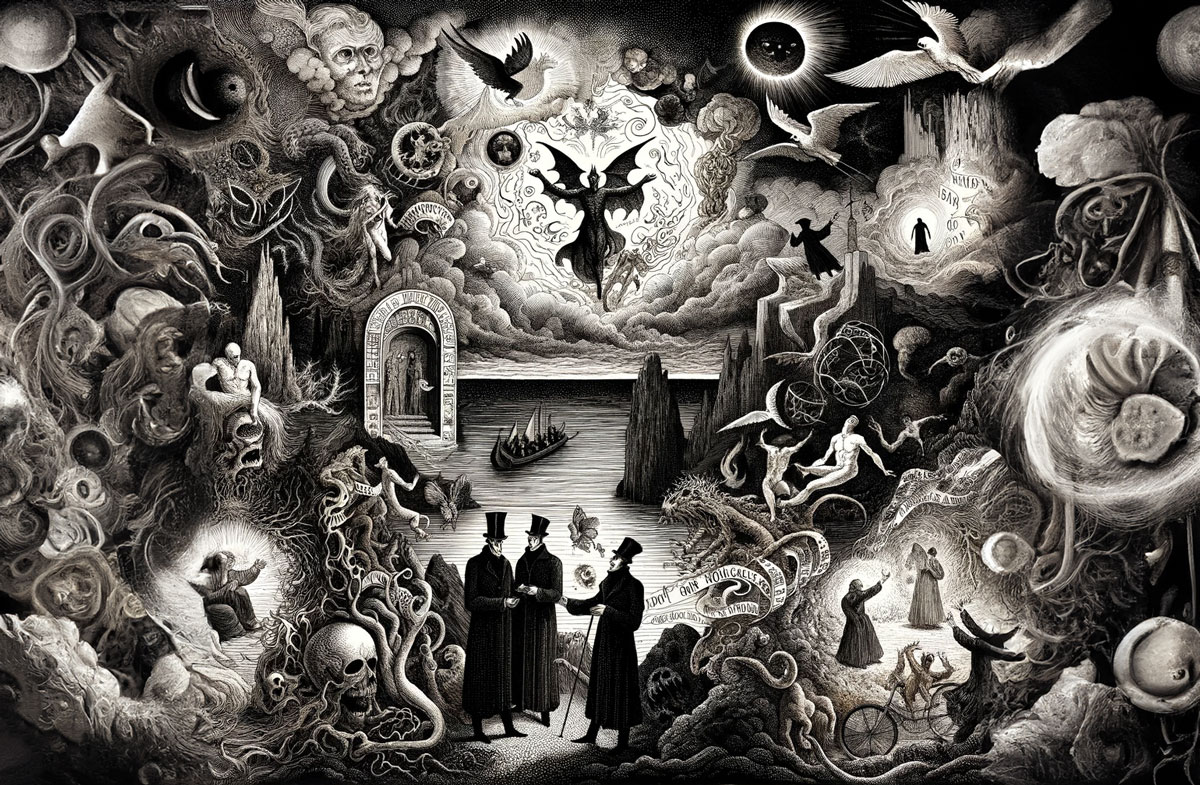Les Chants de Maldoror (The Songs of Maldoror) is a cornerstone work; the entire art of the early 20th century (from Modigliani to Hemingway) breathes in the essence of the French poet.
by Massimo Fini
I’m currently reading Lautréamont’s The Songs of Maldoror. I had first grappled with it in my twenties, skimmed a few pages, and then gave up. I wasn’t ready then for such a demanding read.
The same happened with Proust. Four or five times, I began Swann’s Way only to hurl the first of the eight volumes of the Recherche, published by Mondadori, against the wall by page fifty. At forty, one summer, I devoured all eight volumes. It’s clear why. The Recherche is a grand fresco of an era, a treatise on psychoanalysis, but above all, a book about Time and memory (the madeleine).
At twenty, one has less memory than at forty; we are busy experiencing those moments that will, in turn, become memories. So, be wary of twenty-year-olds claiming to be exhausted Proust fans; they’re either posturing or sublimating their homosexuality through it (though today, with homosexuality no longer a taboo, this façade is less necessary).
Our appreciation of a book, a movie, or any work of art depends on the life stage we’re in when we encounter it. It’s not always the case that maturity brings the best understanding. Rimbaud, for instance, resonates more with the sensitivity of teenagers or young adults, being an adolescent himself. He penned A Season in Hell at 19 and concentrated his work into four years, after which he abandoned his poetic and literary pursuits, traversed the Alps on foot multiple times, and eventually sailed to Africa to become a trader, shunning any contact with publishers and newspapers. To one particularly persistent newspaper, he said: “My season is over; that’s all.”
Lautréamont, alongside Rimbaud (“the poet becomes a seer through a long, reasoned derangement of all the senses,” a phrase he wrote in a letter to a friend, not to Verlaine as commonly believed), is a founder of modern poetry, literature, and culture.
The entire art of the early twentieth century, including literati, poets, painters, writers, journalists – Guillaume Apollinaire – drew inspiration from Lautréamont, from surrealism to cubism to fauvism to pointillism to symbolism. Often unconsciously, sometimes knowingly. Amedeo Modigliani, for instance, had read him; Modigliani was one of the most brilliant, extraordinary, and generous figures of that unparalleled Paris spanning from the late 19th to the 1930s. This Paris gathered painters, writers, musicians from all over Europe – from Spain to Russia to Romania to Bulgaria to Turkey – and later from America, whose main role, though not exclusively (think Hemingway, Fitzgerald, Henry Miller), was to act as savvy art dealers, buying up works from all the destitute painters, Picabia aside, Picasso included.
The titanic attempt by Lautréamont, Rimbaud, and Baudelaire in the mid-19th century, within the short span of their lives (Lautréamont died at 24, Rimbaud ceased writing at 22, Baudelaire at 46), was to dismantle the social and economic structures of their era, that is, the bourgeoisie.
The most potent in this endeavor was Lautréamont, with his extraordinary, novel writing and his prose poetry, as seen in the “Ode to the Ocean” from the first canto of Maldoror.
In essence, after reading Lautréamont, one cannot remain the same as before.
Il Fatto Quotidiano, January 2, 2024

